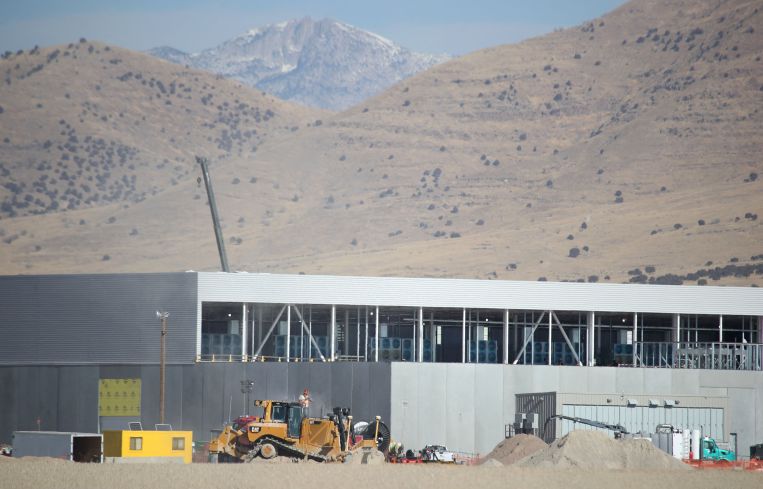Data Center Delivery Could Face Big Delays Through 2027
By Mark Hallum August 24, 2023 11:45 am
reprints
The recent momentum of artificial intelligence (AI) is driving an imbalance between supply and demand in the data center market, with Phoenix feeling much of the proverbial heat, according to a new report from JLL.
The boom in the need for data center space has new developments pre-leased before they are even built and, thanks to delays and supply chain constraints during the pandemic, not enough new centers are coming on the market to meet the demand.
“Because of COVID, there was a lack of development of new facilities during that period, so a lot of that slack in the market started to get taken up by pretty aggressive leasing by enterprises — the big cloud providers and hyperscalers,” JLL’s Curt Holcomb, who co-authored the report, told Commercial Observer.
In Phoenix, for example, there is 4.3 million square feet of data center space with only 185,052 square feet available. In terms of the pipeline, 1.4 million square feet is currently under construction with 6.6 million square feet in the planning phase, the JLL report said.
Nationally, most of the data center supply currently in the pipeline for 2023 and 2024 is already pre-leased. The supply chain will be constrained at least until 2027, according to Holcomb, which will be good for the developers cashing in on rent increases.
Cloud service providers, financial firms and health care companies saw the greatest increase in space needs, with 194.5 megawatts being leased in Phoenix and 185.9 megawatts in the Pacific Northwest in the first half of 2023.
And the big players in the space have seen massive growth in recent years. Microsoft Intelligent Cloud, AWS, Google Cloud and Oracle combined have seen a compound annual growth rate of 22.8 percent since 2018, when those firms were making just under $100 billion. They currently make just shy of $225 billion.
The Phoenix metropolitan area isn’t the only commercial real estate market with choking points, either. Parts of the Pacific Northwest such as Hillsboro, Ore., also outpaced traditional data center hotbeds like northern Virginia in the first half of 2023, according to the JLL research led by Kari Beets.
One of the factors driving tenants away from primary markets like northern Virginia are rent increases of 20 to 30 percent year-over-year and three- to five-year wait times for the delivery of new developments in that area, while that pipeline grew in other markets, according to JLL.
“Going into this year, the markets started to tighten and we started to see our rates go up. But when the AI companies started to finally get funding and really started to gain momentum, we’ve seen supply basically disappear,” Holcomb said. “So across the country, you’re looking at single-digit vacancies.”
Northern Virginia has 47.6 million square feet of data center inventory with only 167,000 square feet available, 6.6 million square feet under construction, and 45 million square feet planned for construction.
Northwest data centers in the interior of Washington and Oregon have 3.9 million square feet of inventory with 250,056 square feet available. About 1.9 million square feet is under construction and 1.2 million square feet is in the planning phase.
Capacity to handle that new data will be a problem, and power grids will struggle to give these data centers a steady supply of electricity. The sources of electricity is not so much a problem, Holcomb said, despite many facilities using as much power as a medium-size city, but it is the transmission infrastructure that will be lacking.
Ten years ago, for example, utility companies would need to provide only about 10 to 15 megawatts to data centers. It’s looking more like 600 megawatts to a gigawatt are needed for facilities today.
This also puts Texas in a position to lead, with the Lone Star State having ample capacity for future growth, according to Holcomb.
But tenants have more than enough cash on hand to lease data center space if it existed, according to JLL. And Houston and Boston could be targets as they seem to have the highest availability of all the markets in the report.
Boston has a total inventory of 1.2 million square feet with 225,000 square feet available with no new projects planned or under construction, while Houston has an inventory of 877,000 square feet, 186,000 square feet available, with projects in the pipeline not even breaking six figures in size.
One aspect to consider, though, is that tenants are not paying per square foot but pay by the megawatt or kilowatt. A 10 megawatt facility typically could cost up to $100 million to develop and span 100,000 square feet.
What makes states like Arizona attractive to developers are sales tax abatements where 6 percent can be saved on $300 million to $500 million on technology to fill the center. Over the course of a 10-year period, a developer could spend up to $1 billion outfitting a data center, according to JLL.
In the end, the deciding factor of where developers and tenants — who usually specialize in data on behalf of clients who need cloud and AI services — boils down to where space can be found in locations less prone to natural disasters — cities like Dallas, Chicago and Salt Lake City, for example.
If timelines for data center delivery are slow, it likely isn’t the lending environment that’s hobbling growth, with life insurance companies, banks, debt funds and commercial mortgage-backed securities institutions being among the top lenders for the market, according to JLL.
Data center developers have more problems on their hands with competition from the industrial market, since both need similar types of sites.
Mark Hallum can be reached at mhallum@commercialobserver.com.



